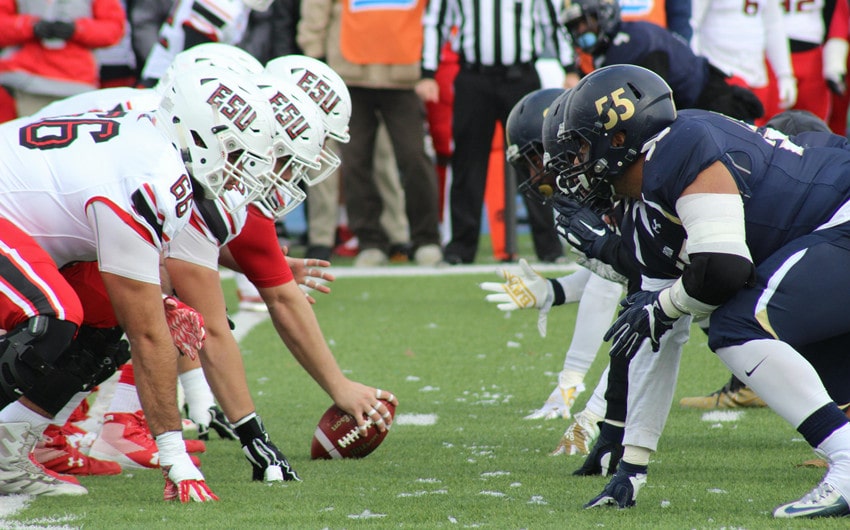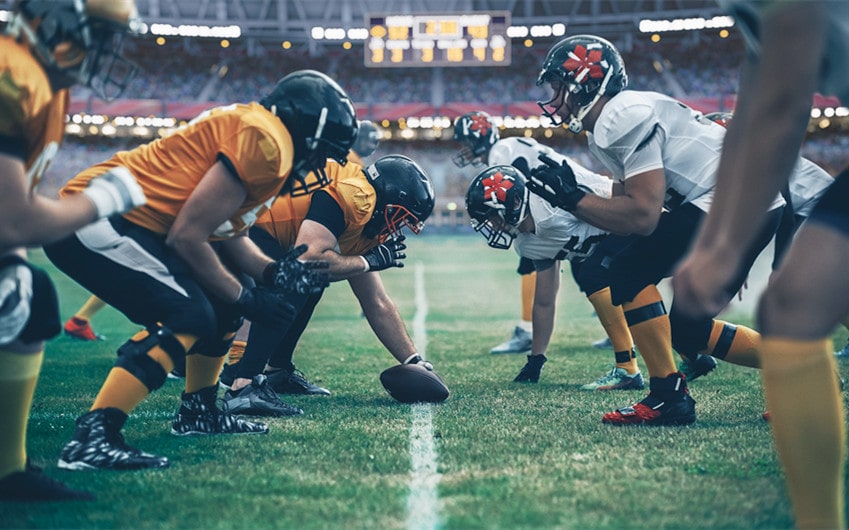How Many Players on a Football Team? All You Need to Know
Football is a game we all love, but have you ever wondered how many players are on a football team during a game? The answer is simple: each team has 11 players on the field at a time. This includes offensive, defensive, and special teams players, each playing a key role in the game.
Whether you’re watching with friends or playing for fun, knowing the team structure can help you appreciate the sport even more. In this article, we’ll break down the positions and how teams are built, so you’ll understand the game better.
Number of Players on the Field

In football, each team has 11 players on the field at any given time, making a total of 22 players actively involved in the game. This rule applies to both American and Canadian football, though the field size and some minor rules differ. The 11 players are divided between offense and defense, depending on which team has possession of the ball.
Offensive and Defensive Lineups
Offense: When a team is in possession of the ball, they are on offense. Their primary objective is to advance the ball down the field and score points. The offensive unit is made up of a quarterback, linemen, wide receivers, running backs, and tight ends, each working together to execute plays.
Defense: The team not in possession of the ball is on defense. Their goal is to stop the offensive team from advancing and to force a turnover or a stop. Defensive players are arranged across the defensive line, linebackers, and the secondary (cornerbacks and safeties) to cover offensive threats and prevent a score.
Role of Substitutes
While only 11 players from each team are on the field, the overall roster is much larger. Football allows for substitutions throughout the game, which means that players rotate in and out depending on the situation.
For example, different formations or strategies may require fresh players to maintain the team’s performance, whether on offense, defense, or special teams. Substitutes also come into play in case of injury, tactical changes, or to give rest to key players.
Breakdown of Positions in Football

Football is a strategic game with various specialized roles for players. Each position has specific responsibilities that contribute to the overall team effort. Here’s a breakdown of the main positions in a typical football team:
Offensive Positions
- Quarterback (QB): The leader of the offense, the quarterback is responsible for calling plays and distributing the ball, either by passing or handing it off to a running back. The QB is often considered the most important player on the field due to their role in decision-making and execution.
- Running Back (RB): The running back is primarily responsible for carrying the ball and advancing it on the ground. They also block or catch passes, depending on the play.
- Wide Receiver (WR): Wide receivers are skilled at catching passes and running routes to create separation from defenders. They are critical to a team’s passing game and often target long, deep throws from the quarterback.
- Tight End (TE): Tight ends are hybrid players, combining the skills of both a receiver and a blocker. They play near the offensive line but can also run routes and catch passes.
- Offensive Linemen (OL): These players include tackles, guards, and the center. Their job is to protect the quarterback during passing plays and create openings for the running back on rushing plays. Linemen rarely touch the ball but are essential to any successful offensive play.
Defensive Positions
- Defensive Linemen (DL): Consisting of defensive ends and defensive tackles, these players line up against the offensive line and attempt to disrupt plays by tackling the quarterback or stopping the running back.
- Linebackers (LB): Linebackers are versatile players who can defend against both the run and the pass. They often line up a few yards behind the defensive line and are key to stopping the opponent’s running game and short passes.
- Cornerbacks (CB): Cornerbacks are typically positioned on the outside of the defense, tasked with covering wide receivers. Their job is to prevent passes from being completed and to tackle receivers who catch the ball.
- Safeties (S): Safeties play deeper in the defensive backfield and provide additional coverage on passing plays. They also support against the run by tackling ball carriers who break through the first lines of defense.
Special Teams
- Kicker (K): The kicker is responsible for kickoffs, field goals, and extra point attempts. Their role is crucial in scoring points and gaining favorable field position.
- Punter (P): The punter kicks the ball downfield after a failed third down, aiming to pin the opposing team as far back as possible.
- Long Snapper (LS): A specialized center who snaps the ball over long distances during punts and field goal attempts.
- Returners (KR/PR): Kick returners and punt returners are responsible for catching and returning kicks or punts. Their speed and agility help in gaining valuable yardage and sometimes scoring touchdowns.
Full Roster Size of a Football Team

The size of a football team’s roster varies depending on the level of competition, from youth leagues to professional football. Understanding the full roster size helps explain how teams manage their players throughout the season, balance positions, and ensure backups are available for substitutions and injuries.
1. NFL (Professional Football)
In the NFL, teams have an active roster size of 53 players during the regular season. However, not all of these players are eligible to participate in a game. On game day, only 46 players can be dressed and ready to play.
Additionally, NFL teams have a practice squad consisting of up to 16 players. These players don’t participate in games unless they are promoted to the active roster, but they practice with the team and are available as injury replacements or for development.
This roster size ensures that teams have enough depth to handle the physical demands of the season, which includes the potential for injuries. Coaches use the full roster strategically, assigning backups to key positions and preparing for different game situations. The NFL’s roster rules also allow for in-game rotations, meaning players can substitute frequently to keep the team fresh.
2. College Football
College football teams typically have much larger rosters compared to professional teams. While the number of scholarship players is capped at 85, teams often carry additional walk-on players, bringing the total roster size to around 100 or more.
However, like in the NFL, not all players are active on game day. In most college leagues, the limit for active players during a game is 70. This allows college coaches to have more flexibility with substitutions, especially given the number of different offensive and defensive packages that might be employed throughout a game.
With such a large roster, college teams are able to develop younger players over several seasons and build a deep bench for special teams, situational play, and injury replacements. This also allows coaches to manage player fatigue better, especially in high-pressure or long-running games.
3. High School Football
High school football rosters can vary widely depending on the size of the school and the strength of the football program. Larger schools with established football programs might field teams with 50-80 players, while smaller schools could have rosters closer to 30-40 players.
Unlike professional and college football, high school football tends to have fewer restrictions on the number of players that can be active on game day. Most players will suit up and be available to play, which gives coaches more flexibility in using substitutes. However, because of smaller rosters, some players often play on both offense and defense, particularly in smaller schools.
High school football provides a foundation for players to develop their skills, and having a sizable roster allows coaches to introduce a variety of plays and strategies. While some players may specialize in specific positions, others may take on multiple roles, further expanding their football experience.
4. Youth Football
Youth football teams generally have smaller rosters, often ranging from 15 to 30 players. At this level, the focus is on participation and skill development rather than strict positional specialization. Most players will have the opportunity to play multiple positions to gain experience, and the roster size reflects the local league or competition rules.
Substitutions are common, as youth football emphasizes keeping players safe and allowing them plenty of time on the field. Coaches typically ensure that all players get to participate in the game, which is important for learning and enjoyment at this developmental stage.







